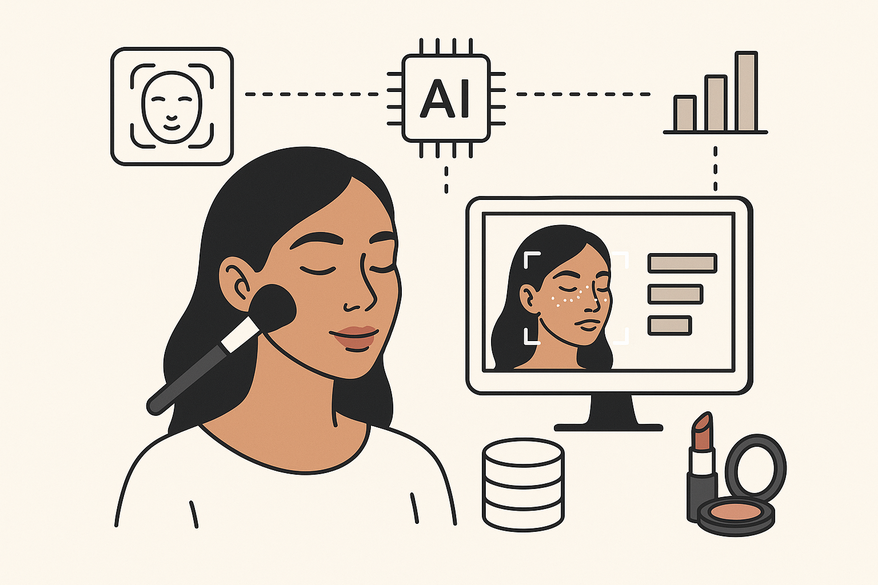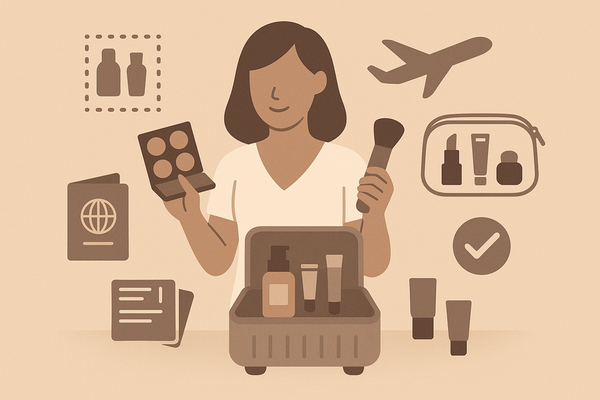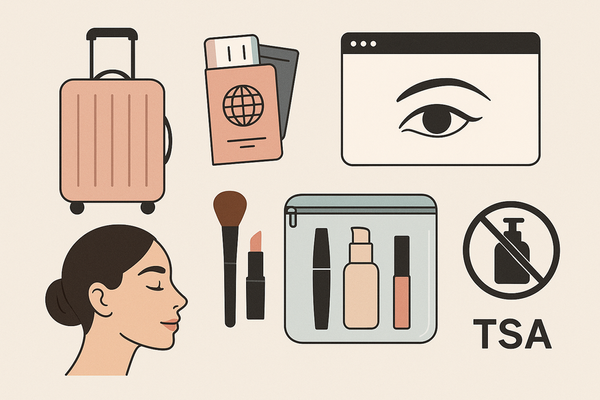How Makeup Scoring Works with AI Generators
Explore how makeup scoring works with AI generators for personalized beauty insights using computer vision and data science techniques.

Estimated reading time: 7 minutes
Key Takeaways
- Objective evaluation: AI-driven makeup scoring assesses cosmetics using metrics like ingredient safety, artistry, and sustainability.
- Computer vision: Facial landmarks, symmetry, color harmony, and blending precision are analyzed automatically.
- Ingredient safety: Formulas are matched against databases such as EWG Skin Deep.
- Personalized recommendations: AI makeup generators leverage scores to suggest tailored looks via virtual try-on.
- Ethical considerations: Data diversity, model bias mitigation, interpretability, and user privacy are essential.
Table of Contents
- 1. Introduction
- 2. Understanding Makeup Scoring
- 3. How Makeup Scoring Works
- 4. The Role of AI in Makeup Scoring
- 5. How AI Makeup Generators Enhance the Process
- 6. Technical Insights and Challenges
- 7. Conclusion
- FAQ
1. Introduction
“How makeup scoring works” refers to the practice of evaluating cosmetic products or applications based on criteria such as quality, safety, artistry, and sustainability. As the beauty industry evolves, artificial intelligence enables automated, objective, and scalable assessment of makeup products and application techniques.
Tools like Makeup Check AI showcase how machine learning can provide personalized makeup scoring and generation.
In this post, we’ll explore how makeup scoring works, the role of AI makeup generators, technical challenges, and future trends.
2. Understanding Makeup Scoring
Understanding makeup scoring requires breaking down its components into clear metrics:
- Safety of ingredients: Assesses allergen potential, endocrine disruption risk, and overall health impact.
- Product transparency: Evaluates brand openness on ingredient sourcing and manufacturing.
- Technique & artistry: Measures blending quality, symmetry, color harmony, and precision.
- Longevity & finish: Scores wear time and finish type (matte, dewy, satin).
- Environmental impact: Rates sustainability of ingredients, recyclability of packaging, and carbon footprint.
Traditional evaluation methods rely on expert panels or consumer focus groups, which can be:
- Subjective: Experts may disagree on artistic merit.
- Time-consuming: Scheduling and analyzing panels slows product launches.
- Inconsistent: Different panels produce varying results.
The need for digital transformation has grown as brands launch hundreds of new products yearly. AI offers a standardized, objective, and data-driven approach to makeup scoring at scale, reducing human error and bias. Eco-rating milestone marks industry openness and sustainability progress.
3. How Makeup Scoring Works
When powered by AI, makeup scoring leverages computer vision, statistical modeling, and large datasets to deliver precise and repeatable scores. For an in-depth look under the hood, explore the algorithmic workflow.
3.1 Image Analysis
- Detect facial landmarks (eyes, lips, cheekbones).
- Measure symmetry (ear-to-ear and eye-to-lip alignment).
- Evaluate color harmony by comparing pixel-level data against skin tone palettes.
- Assess blending precision using texture analysis.
3.2 Ingredient Assessment
- Match each ingredient against safety databases (e.g., EWG Skin Deep).
- Flag potentially harmful compounds like parabens or phthalates.
- Compute an ingredient risk score by summing hazard levels.
3.3 Scoring Logic
- Color match & harmony: 30%
- Symmetry & precision: 25%
- Technique & finish quality: 25%
- Ingredient safety risk: 20%
Weights can be adjusted for different user preferences or product categories, offering flexibility in evaluation.
3.4 Data Sources
- Annotated product photos with expert labels.
- User-generated images from mobile apps.
- Ingredient safety libraries (EWG, national cosmetic regulations).
- Consumer reviews and ratings.
4. The Role of AI in Makeup Scoring
An AI makeup generator uses user images and preferences to evaluate existing looks and suggest new ones that maximize safety, artistry, and performance.
- Consistency: Applies identical criteria across every analysis.
- Objectivity: Uses validated datasets instead of subjective opinions.
- Scalability: Reviews tens of thousands of images or products per minute.
Industry examples:
- Yuka app’s cosmetic evaluation feature rates ingredient safety and transparency in real time.
- EcoBeautyScore Association’s eco-rating rollout highlights environmental impact and fosters collective openness.
5. How AI Makeup Generators Enhance the Process
5.1 Workflow Integration
- User uploads a selfie or makeup swatch.
- AI analyzes facial features, makeup score, and ingredient risk.
- Generator algorithm recommends high-scoring products and techniques.
5.2 Integration with Virtual Try-On
- Real-time AR overlays let users preview suggestions.
- Tools like WebAR or mobile SDKs enable seamless virtual makeup try-on.
5.3 Adaptive Learning Loop
- System collects user feedback on recommended looks.
- Algorithms update weightings based on real-world success rates.
- Continuous retraining with new images refines both scoring and generation models.
5.4 Future Trends
- Full personalization: AI synthesizes millions of looks to craft bespoke routines.
- Voice-guided makeup tutorials driven by dynamic scoring insights.
- Integration with wearable sensors to measure skin pH and adapt recommendations.
6. Technical Insights and Challenges
6.1 Data Accuracy & Diversity
High-quality training data must cover a range of:
- Skin tones from light to deep.
- Makeup styles across cultures and occasions.
- Lighting conditions and device cameras.
Without diverse data, models risk unfairly low scores for underrepresented groups.
6.2 Model Bias & Ethics
- AI systems can perpetuate narrow beauty standards if training sets skew toward specific looks.
- Regular fairness audits and inclusion of diverse beauty norms are essential.
- Transparent criteria help users trust the scoring outcomes.
6.3 Interpretability & Transparency
Explainable AI methods such as feature importance visualizations allow users to see:
- Why a certain look scored low for blending.
- Which ingredients triggered safety flags.
This transparency builds user confidence and supports regulatory compliance.
6.4 Continuous Updates
- Ingredient safety data evolve as new research emerges.
- Cosmetic trends shift seasonally.
- Models require periodic retraining and database refreshes to stay current.
6.5 Privacy Considerations
- Secure storage and encryption of user photos and personal preferences.
- Clear privacy policies detailing data usage and retention.
- Options for users to delete their data or opt out of model training.
7. Conclusion
We’ve seen how makeup scoring works through AI-driven image and ingredient analysis, and how AI makeup generators elevate personalized beauty experiences.
By combining objective scoring with generative recommendations, these systems deliver consistent, scalable, and innovative makeup evaluation and design.
Share your thoughts on AI’s role in reshaping makeup trends and scoring techniques in the comments below.
FAQ
- What is makeup scoring? Makeup scoring is the evaluation of cosmetics based on criteria like quality, safety, artistry, and sustainability.
- How does AI analyze makeup in images? AI uses computer vision to detect facial landmarks, assess symmetry, color harmony, and blending precision at the pixel level.
- Are AI makeup scores customizable? Yes, scoring weights can be adjusted to reflect user preferences or product categories.
- How is my privacy protected? User photos and data are encrypted, stored securely, and users can opt out or delete their information at any time.




